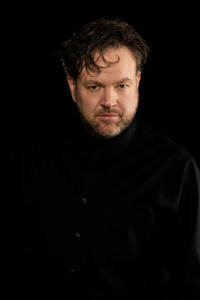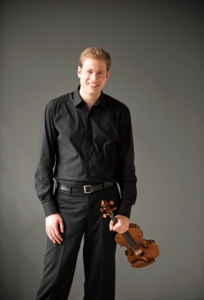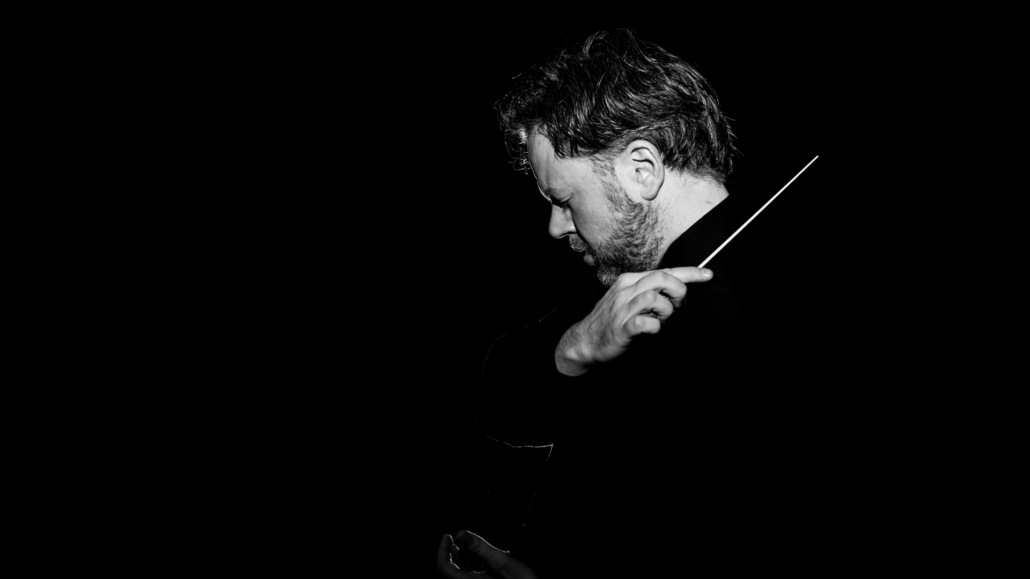 Christian Kluxen, conductor
Christian Kluxen, conductor
Now in his seventh season as Music Director of the Victoria Symphony, sixth season as Chief Conductor of the Arctic Opera and Philharmonic, and first season as the Principal Guest Conductor of the Turku Philharmonic, Christian Kluxen is regarded as one of the most exciting conductors to emerge from Scandinavia. Born in Copenhagen in 1981 to Danish-German parents, Kluxen has a natural affinity towards the Germanic and Scandinavian repertoire, particularly the works of Beethoven, Brahms, Richard Strauss, Nielsen, and Sibelius.
In the press he has been described as “a dynamic, charismatic figure” who “forms the music with an impressive vertical power of emotion and a focus on the grand form”, conducting “with exemplary clarity and a heavenly warmth.” From Canada, to Finland, and Norway, Maestro Kluxen has been recognized for his sincere and transparent leadership, innovative programming, and his bold, imaginative, and energetic interpretations.
Alongside his many and varied commitments with APO, Turku Philharmonic, and Victoria Symphony, recent and forthcoming guest engagements include Orchestre de Chambre de Lausanne, Odense Symphony, and Norrköping Symphony. On the operatic stage, Kluxen has conducted extensive tours of Don Giovanni and Madama Butterfly with the Danish National Opera, followed by his Berlin conducting debut with Die Zauberflöte at Komische Oper. In 2017, he led highly successful performances of Die Fledermaus with Aarhus Symphony Orchestra, and Ariadne auf Naxos with Arctic Opera and Philharmonic. In 2019, he led two full productions of Bizet’s Carmen; in Denmark at Opera Hedeland and in Norway with Arctic Opera and Philharmonic.
Kluxen’s concerts have been broadcast live in Denmark, the UK, Sweden, Norway and Canada. He has received several prestigious awards and prizes, and in 2016 he was nominated by the International Opera Awards as “Young Conductor of the Year.”
 Jonathan Crow, violin
Jonathan Crow, violin
One of Canada’s brightest talents, violinist Jonathan Crow exudes “masterful coolness” (The Montreal Gazette) as concertmaster of the Toronto Symphony Orchestra. Jonathan earned his Bachelor of Music in Honours Performance from McGill University, at which time he joined the Orchestre Symphonique de Montréal as Associate Principal Second Violin. Between 2002 and 2006, Jonathan was engaged as Concertmaster of that symphony, and notably during his tenure, was the youngest concertmaster of a major North American orchestra. In 2011 he was appointed Concertmaster of the Toronto Symphony Orchestra. Jonathan continues to perform as guest concertmaster with orchestras around the world, including the National Arts Centre Orchestra, Pittsburgh Symphony, Mahler Chamber Orchestra, Filarmonia de Lanaudiere and Pernambuco Festival Orchestra (Brazil). Jonathan has also performed as a soloist with most major Canadian orchestras including the Montréal, Toronto and Vancouver Symphony Orchestras, the National Arts Centre and Calgary Philharmonic Orchestras, the Victoria, Nova Scotia and Kingston Symphonies, and Orchestra London, under the baton of such conductors as Charles Dutoit, Sir Yehudi Menuhin, Gustavo Gimeno, Sir Andrew Davis, Peter Oundjian, Kent Nagano, Mario Bernardi and João Carlos Martins.
Jonathan joined the Schulich School of Music at McGill University as an Assistant Professor of Violin and was appointed Associate Professor of Violin in 2010. Current and former students of Mr. Crow have received prizes at competitions around the world, including the Menuhin International Violin Competition, Montreal Symphony Orchestra Competition, Shean Competition, CBC Radio’s NEXT competition, Eckhardt-Grammatte Competition, Canadian Music Competition, and Stulberg International String Competition, and work regularly with orchestras such as the National Arts Centre Orchestra, Toronto Symphony Orchestra, Orchestre Symphonique de Montréal, Camerata Salzburg, Konzerthausorchester Berlin, Verbier Chamber Orchestra, Vienna Kammerphilharmonie and Vienna Symphony Orchestra. Jonathan is currently Associate Professor of Violin at the University of Toronto.
In 2016 Jonathan was named Artistic Director of Toronto Summer Music, which has enjoyed record attendance and rave reviews in all of his first six seasons. An avid chamber musician, he has performed at chamber music festivals throughout North America, South America and Europe including the Banff, Ravinia, Orford, Domaine Forget, Seattle, Montreal, Ottawa, Incontri in Terra di Sienna, Alpenglow, Festival Vancouver, Pernambuco (Brazil), Giverny (France) and Strings in the Mountains festivals. He is a founding member of the Juno Award-winning New Orford String Quartet, a project-based new ensemble dedicated to the promotion of standard and Canadian string quartet repertoire throughout North America. As an advocate of contemporary music he has premiered works by Canadian composers Michael Conway Baker, Eldon Rathburn, Barrie Cabena, Gary Kulesha, Tim Brady, Francois Dompierre, Vivian Fung, Ana Sokolovic, Marjan Mozetich, Christos Hatzis, Ernest MacMillan and Healey Willan. He also includes in his repertoire major concerti by such modern composers as Ligeti, Schnittke, Bernstein, Brian Cherney, Rodney Sharman, Vivian Fung and Cameron Wilson.
Jonathan has recorded for ATMA, Bridge, CBC, Oxingale, Skylark, and XXI-21 labels and is heard frequently on Chaîne Culturelle of Radio-Canada, CBC Radio Two, and National Public Radio, along with Radio France, Deutsche Welle, Hessischer Rundfunk and the RAI in Europe.



 Christian Kluxen, conductor
Christian Kluxen, conductor Jonathan Crow, violin
Jonathan Crow, violin